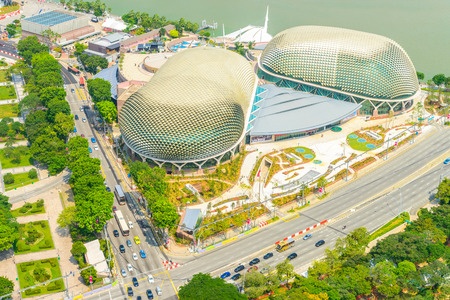2 December, 2016
In a public consultation exercise which ran from 26 October to 16 November this year, the Ministry of Finance (“MOF”) and the Accounting and Corporate Regulatory Authority (“ACRA”) sought feedback from the public in relation to proposed amendments to the Companies Act of Singapore (Cap.50) (“CA”) to introduce an inward re-domiciliation regime (“Proposed Regime”). The Proposed Regime will allow a corporation incorporated in another jurisdiction to transfer its registration to Singapore while retaining its identity and history.
The purpose is to encourage and facilitate the relocation by foreign corporations of their global or regional headquarters to Singapore. Currently, jurisdictions such as Australia, Canada, New Zealand and Ireland already have re-domiciliation regimes. A popular reason why a company would want to seek re-domiciliation from its original jurisdiction is that the new host jurisdiction offers a more favourable regulatory environment. Other reasons would include financial or fiscal incentives and improved access to international financial and capital markets. The present proposal by MOF and ACRA is therefore aimed at enhancing Singapore’s competitive position as an international business and financial centre.
This update summarises the key proposals.
The Key Proposals
Opportunities for businesses
Entities which may apply for transfer of registration
Besides a body corporate that is incorporated outside Singapore, it has been proposed, amongst other things, that the Proposed Regime be available to other types of foreign entities that meet the following criteria:
- A minimum size based on the criteria for a small company and small group as currently set out in the Thirteenth Schedule of the CA;
- The laws of the original jurisdiction must permit re-domiciliation;
- The relevant laws of the original jurisdiction must be complied with; and A solvency statement must be provided by the foreign entity.
- A foreign entity which is able to fulfil the requirements under the Proposed Regime may then apply for registration with ACRA.
Streamlined process of transfer of registration
Under the Proposed Regime, the first step to transfer a registration will be an application to ACRA by the foreign entity. The foreign entity will have to furnish ACRA with information and documents such as particulars of its registered office, its name in its original jurisdiction and a certified copy of its certificate of incorporation in its original jurisdiction. If all is in order, a notice of transfer of registration will be issued. Upon payment of a prescribed fee and the application of the foreign entity, a certificate of transfer of registration will subsequently be issued. Lastly, the foreign entity must submit to ACRA a document evidencing de-registration in is original jurisdiction in order to complete the process.
One obvious benefit to foreign entities that avail themselves of this re-domiciliation regime is that the transfer of registration does not create a new legal entity, and as such would not affect its continuity as a body corporate or any of its existing property, rights or obligations.
Application of the CA to the re-domiciled entity
Under the Proposed Regime, upon successful registration of the foreign entity with ACRA, the foreign entity will be deemed a “company” as defined under Section 4(1) of the CA, and be subject to all the provisions which apply to companies under the CA (save for Section 144 of the CA, for which a 3-month grace period is given).
Going Forward
The consultation period has now closed, and it is expected that MOF and ACRA will in due course publish their responses to the feedback received and announce a more definitive timeline within which these important statutory changes will take effect.
* Ministry of Finance and Accounting and Corporate Regulatory Authority, “Key Clauses in the Draft Companies (Amendment) Bill and Consultation Questions”, https://www.acra.gov.sg/uploadedFiles/Content/Publications/
Public_Consultation/Annex%201%20- %20Key%20Clauses%20and%20
Consultation%20Qns%20(reformatted).pdf (accessed 20 November 2016)

.jpg)





